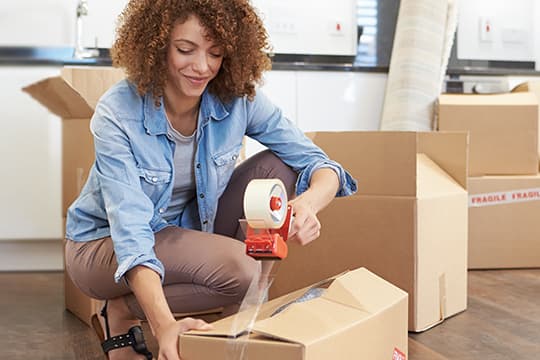Freight Packaging Tips for Stress-Free Small Business Shipping
October 22, 2020

Freight Packaging Tips
The Importance of Proper Packaging
When it comes to shipping, it’s easy for first-time shippers to make simple mistakes. Of all these, properly packaging shipments often presents one of the biggest challenges. As anyone who has shipped freight or even moved houses can tell you, proper packaging is the key to getting your shipment delivered in one piece and on time. Failing to package your items correctly can lead to delays and costly repairs or replacements to your valuable freight.
Freight Packaging Categories
Because there are infinite types of freight, there are also infinite ways to package it. To make the process of shipping easier, we've broken down the freight packaging process into three separate categories:
- Packing
- Loading
- Securing
Each section contains packaging tips that are sure to help your shipment arrive at its destination securely and on time. If you're looking for a specific packaging tip, head to the section that best fits your particular need to find answers quickly and easily.
Packing Freight Properly
While all steps in the packaging process are equally important, none is as difficult for inexperienced shippers as packing. It's not as simple as throwing things into a box, especially if you're transporting fragile items. Luckily, all you need to do is follow these tips and you'll be packing like a pro in no time!
Pairing Like Goods
Though it may seem like common sense, putting like goods together is a great way to avoid damage to your shipment. This is especially true when dealing with fragile items. Putting items with consistent shapes, sizes and weights together makes it easier to arrange the items in their packaging.
Packing Materials
Packing materials are a little like vacations — you can never have too many of them. It's better to go a bit heavier on the amount of packing peanuts, expandable foam or bubble wrap. The cost of these materials should be insignificant compared to the cost of replacing damaged freight.
Performing the Shake Test
When in doubt, shake it out! Once you've packed your boxes, barrels and bags, it’s a good idea to give them a solid shake. If you hear things moving around, you need to add more packing materials. If the items move when you shake them, they'll move even more when packed into the back of a truck.
Loading and Palletizing Freight
If you're shipping numerous heavy items or a large volume of packages, you'll need to load them onto a shipping pallet. Doing this properly not only ensures that your goods arrive undamaged, but also helps to compact the order into a smaller space so you can fit a greater amount of goods into a smaller area.
Shipping Items in Bags
When shipping items that come bagged, such as dog food or flour, you'll want to use an interlocking stack method along with a load protector and cardboard top. The interlocking stack method is similar to a Jenga™ tower, where items are stacked in alternating directions each layer. This method offers greater stability than the column method, especially with loose goods that would come in bags.
Shipping Items in Boxes
Boxes can be stacked using the column method if they are perfect cubes. If they are rectangular boxes, use the interlocking stack method for greater stability. Boxes should always be stacked on a pallet and should not hang off the edge of the pallet (overhang).
General Loading Tips
Here are a few tips that can help you properly load your freight no matter what it is that you're shipping:
- Follow the orientation markings on any packaging you are using.
- Avoid pallet overhang.
- Use undamaged pallets with a bottom board.
- Use load protectors, corner boards and edge boards to avoid damage to your packaging and freight.
Securing Freight to a Pallet
If you're shipping goods on a pallet, you need to ensure that they are properly and tightly secured so that they do not move or topple during transit. Here are a few things you can do to ensure that your freight stays in place on the way to its destination.
Strap Down Freight to Pallet
After you've stacked your boxes, bags or cartons onto your pallet, they need to be secured to the pallet. To do this, you'll need pallet bands. These bands wrap around the top of your freight and through the center of the pallet. Once you've wrapped the band around your freight and through the pallet, pull the band tight. To check if the band is tight enough, firmly push on the cargo to ensure it does not shift.
Use Plenty of Stretch Wrap
Once your freight is secured onto your pallet, you need to shrink wrap it. Using a clear plastic stretch wrap, cocoon the outside of the freight. A good rule of thumb for how much stretch wrap is required is to use two layers for anything from 0-500 lbs. As weight increases beyond 500 lbs., use one additional layer for each 250 lbs. added (e.g., a 780 lb. pallet would require four layers of stretch wrap). If in doubt, using more stretch wrap is advised.
Get a Free Shipping Quote Today
Now that you know how to properly package, load and secure your freight, you're ready to get shipping! Head over to our instant quote tool to find the best shipping option for your small business.
Topics:
Get Your Shipping Quote

